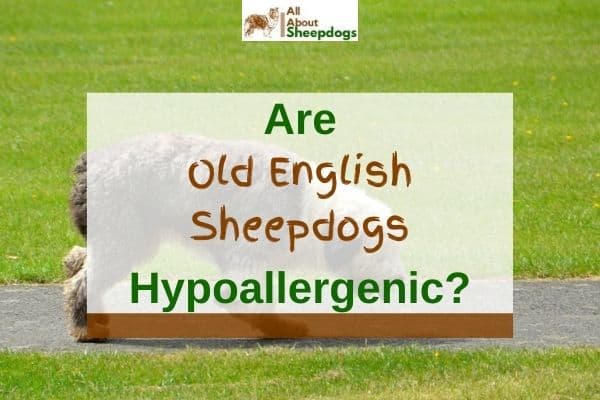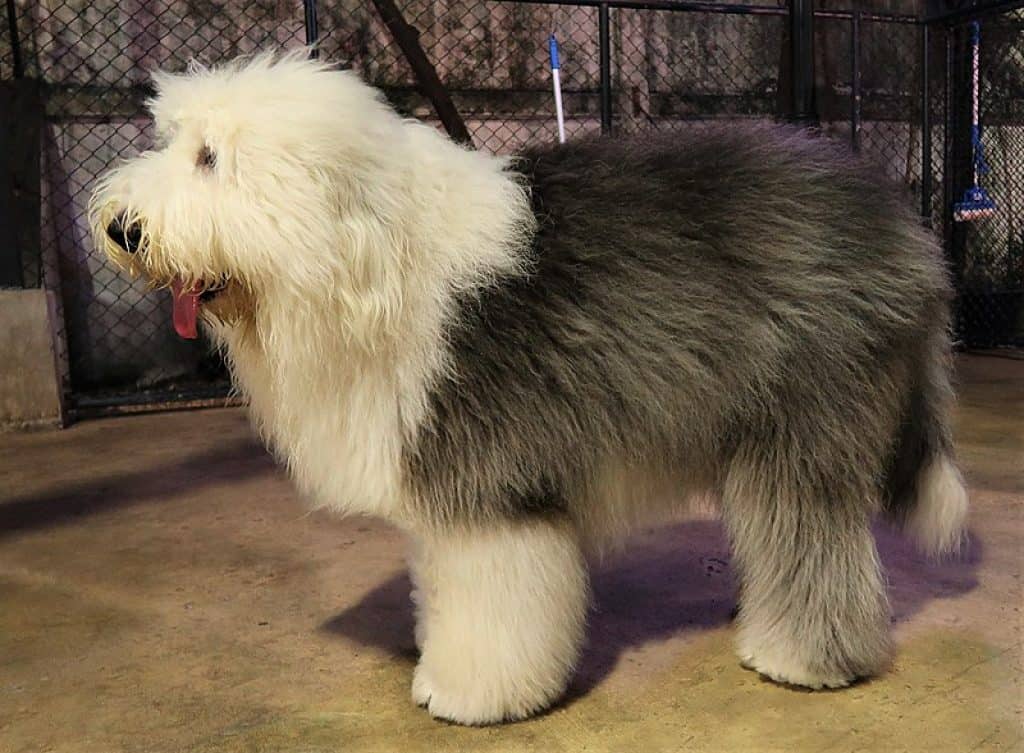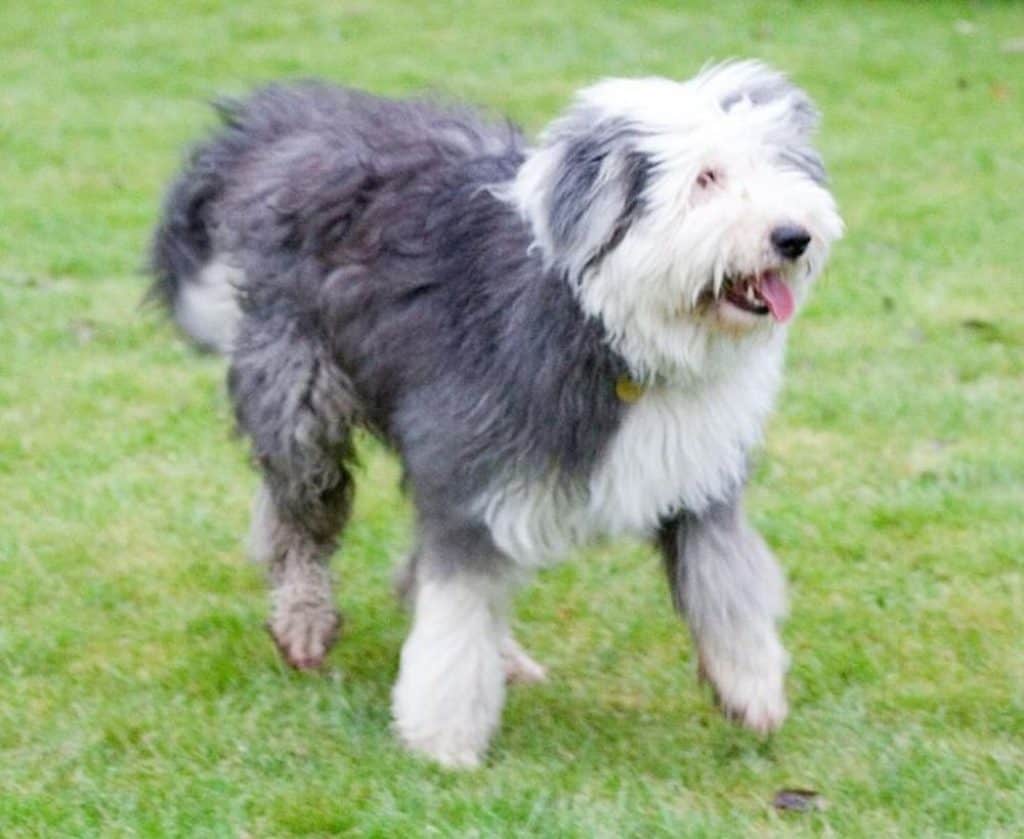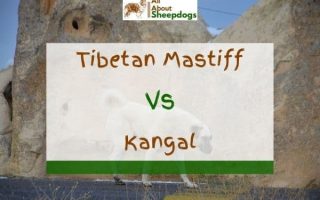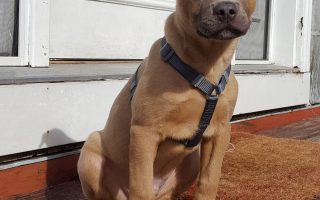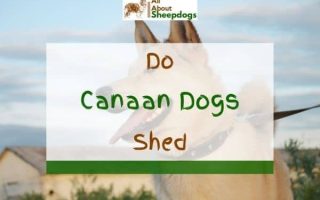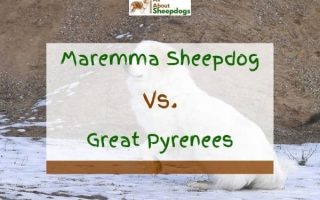If you are familiar with the dog community, you have probably heard of the Old English Sheepdog (OES).
We all know that it is not difficult to fall in love with this dog breed.
From their big, lumbering, shaggy, and goofy physique to their agile, active, and friendly personality, these dogs are primarily ideal for herding livestock in the countryside.
However, they can also live in city homes with permanent fencing and enough space to run around.
These dogs are independent, strong-willed, and social dogs, making them ideal family pets.
But, are Old English Sheepdogs hypoallergenic?
[wpsm_toplist]
Are Old English Sheepdogs Hypoallergenic?
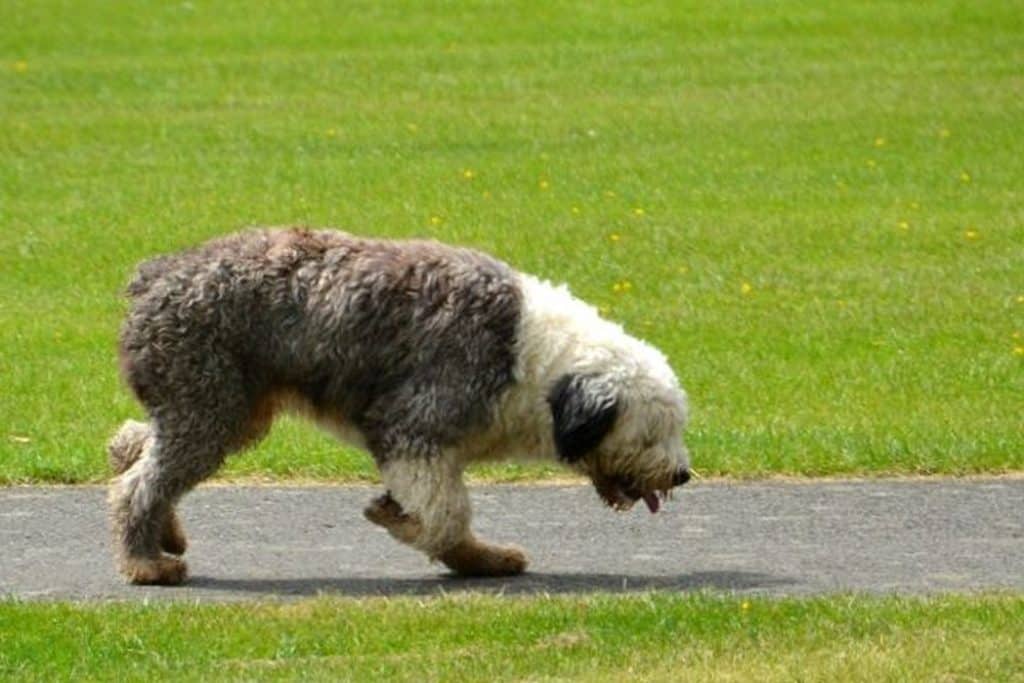
According to a report by the Asthma and Allergy Foundation of America, three out of ten people in America suffer from allergic reactions to dogs and cats.
Luckily, there are various hypoallergenic dogs for dog lovers with existing allergies. Hypoallergenic dogs refer to dogs that are less likely to stimulate allergies.
However, owning a hypoallergenic dog does not mean it will completely prevent allergic reactions in people prone to them.
It just means that it is less likely to cause such reactions compared to other dogs.
Generally, hypoallergenic dogs are those that have a non-shedding coat that contains less dander.
Dander is what is responsible for allergic reactions among people. They also do not have hair as it is less likely for dander to cling on it.
Another feature of hypoallergenic dogs is that they have short and single-layered coats.
A dog without a thick undercoat will not shed, meaning there will be no dander coming from your dog and clinging to various items around your home.
Historically known as Shepherd’s dog or the Bobtail, OES have a thick and shaggy coat, which is not hypoallergenic.
Thus, it is not the best canine companion for those who are sensitive to allergies. These dogs possess a thick double-coat fur which sheds a lot.
As a result, you will have plenty of dander around your home, increasing the chances of developing an allergic reaction.
Do Old English Sheepdogs Shed A Lot?
Now that you have the answer to are Old English Sheepdogs hypoallergenic,’ we can now look at the frequency and amount they shed.
Similar to other dogs, it is normal for Old English Sheepdogs to shed their coat.
These dogs are an above-average shedding breed, meaning they shed anywhere between moderately and heavily all year round.
Luckily, they do not shed seasonally, meaning regular grooming and coat maintenance will help in reducing the amount of shedding.
Most dogs with a double coat, one with an undercoat and outer coat, shed more extensively during the fall and spring.
An advantage of having an OES over other dog breeds that shed heavily, like Leonberger and Akita, is that you will rarely notice that it is shedding.
Most of the fur they lose gets caught on their long and shaggy coats, meaning that a substantial amount of the hair they shed off sticks to their body until you use a brush to remove them.
As a result, many owners of these dogs believe that this dog breed is low shedding since it is challenging to find shed hair on various things in your home.
The truth of the matter is that they are probably not brushing the hair regularly enough.
Can You Shave An Old English Sheepdog?
If you have a dog that sheds frequently, there may come a time where you wonder if you can completely stop them from shedding.
One of the most common things to know about dogs is that it is absolutely normal for them to shed their coats.
There is entirely nothing you can do to stop them from shedding.
However, there are various ways to reduce their rate of shedding significantly:
Shaving
One of them is shaving the coat of your OES.
Although it is not advisable to shave his coat all the way to his undercoat, shaving this dog will save you plenty of time when grooming it.
Thus, giving your canine companion a trim or a light shave will assist you in preventing allergic reactions in people.
Brushing
Another way of reducing their rate of shedding is by brushing their coat regularly. Brushing the coat of your OES every day will make a huge impact.
Brushing will not only help with getting rid of shed hair on his coat, but it will also prevent it from going on your furniture, vacuum cleaner, and clothes.
The proper way to brush your dog’s coat is by evenly spreading oil over his coat and skin, as it naturally aids in enriching its coat.
Proceed to gently brush the fur, preferably with:
- A [amazon link=”B07DWVFDRZ” title=”greyhound comb” link_icon=”amazon” /] or [amazon link=”B00ZGPI3OY” title=”slicker brush” link_icon=”amazon” /] for its topcoat
- And an [amazon link=”B01EZ7UOCM” title=”undercoat rake” link_icon=”amazon” /] for its undercoat.
Diet
[amazon box=”B0009YYK0I”]
Another way to reduce the shedding of this dog breed is by ensuring they have a proper diet rich in nutrients such as Omega 3 & 6, which aids in promoting a healthy and shiny coat.
Bathing
[amazon box=”B01GKE24H6″]
Additionally, bathing your dog regularly and properly also aids in reducing their shedding.
It is advisable to use a good dog shampoo to loosens the dead hair before brushing it out.
However, you have to be careful not to use the shampoo too often as it can cause excessive dryness.
Conclusion
Old English Sheepdogs are some of the most intelligent dogs in the world.
They are also known to be easy-going, patient, amazingly cute, and fun-loving, making them an adorable addition to any family.
So, if you do not mind a dog that moderately to heavily sheds and with whom you do not mind to regularly groom, then the Old English Sheepdog is an ideal option.
If you prefer lower maintenance and lower shedding dog breed, perhaps you should give the Bergamasco Sheepdog a try.
The Italian Greyhound would also be a great option.
Although it is easier to groom, it is worth noting that this dog breed does not look similar to the Old English sheepdog.

